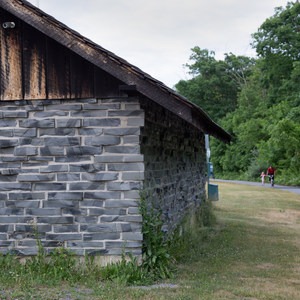You are here
Standing 221 meters above the surrounding hills of East Lothian is the summit of Traprain Law. It makes for a imposing sight and a good short day trip from Edinburgh if you fancy a bit of a stroll without going all the way to the highlands. Wandering its summit is a herd of Exmoor ponies, nicknamed the 13 Kings of Traprain, a photogenic and hardy species of horse that has wandered the area for millennia.
Traprain Law is the site of an Iron Age fort that appears to have been built in 1000 B.C. and was walled and occupied at the time of Hadrian's Wall into the first millennium. It's location on a hill made for a strong strategic point that allowed for good visibility for the whole area and the sea. In 1919, a hoard of Roman-era silver was discovered here and is on exhibit in the Royal Museum of Scotland in Edinburgh.
Today, the sentinels on the hill have four legs and hooves. The 13 Exmoor ponies themselves have an impressive lineage. Wild horses inhabited the British Isles beginning 700,000 years ago, and specialists believe this is one of the closest relatives to pre-common-era wild European horses. They were brought in from England specifically for this project to help maintain the grasslands. They are sturdy beasts and keep mostly to themselves, as they have not been domesticated. It is important to keep dogs away from them, though, as they can get aggressive if threatened. While this specific breed is not currently native to Scotland, it's likely that very similar ponies were common many centuries ago.
The 13 Kings of Traprain are part of a conservation project to preserve the Exmoor breed and restore and maintain some of the last wild grasslands of Exmoor National Park, the U.K., and throughout Europe. Having the ponies is key to sustaining this ecosystem without too much direct management. The ponies turn the soil and eat species, which helps to keep much of the grasses under control and restore the soil. There is also a large climbing crag located on the southern wall with hundreds of routes. Trails ring the whole area.





Comments
Sign In and share them.